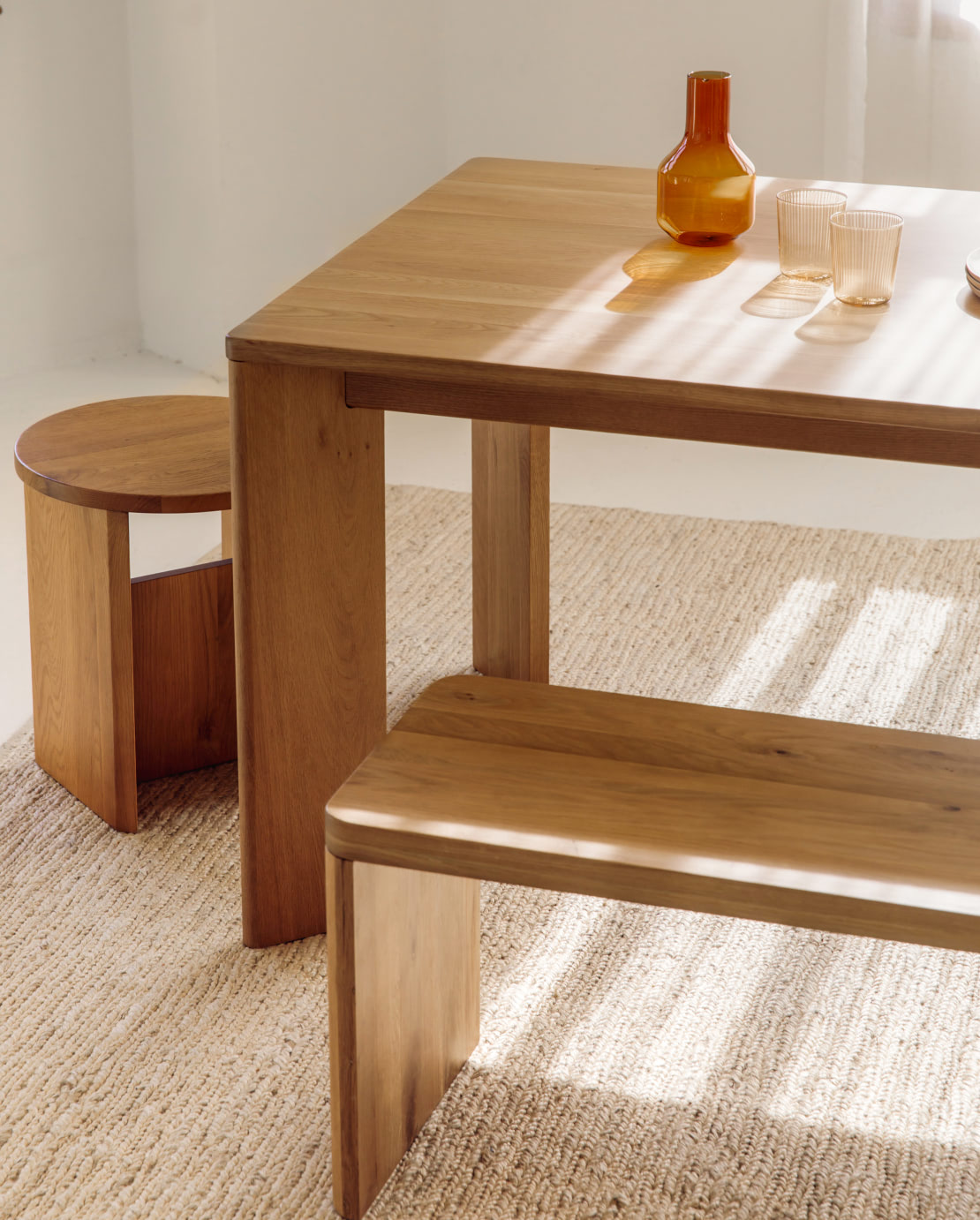Choosing the Right Wood for Your Furniture
When it comes to furnishing your home, choosing the right materials is just as important as selecting the style and color. The type of wood used in furniture plays a significant role in not only the look of your space but also its durability and feel. So, whether you're aiming for an elegant dining room, a cozy living area, or a sleek bedroom retreat, understanding different wood types can make all the difference.
In this article, we'll dive into some of the most commonly used woods in furniture making, exploring the qualities that make each one special. Whether you're shopping for a sturdy dining table or a beautiful nightstand, you'll leave with a better understanding of what works best for your space.
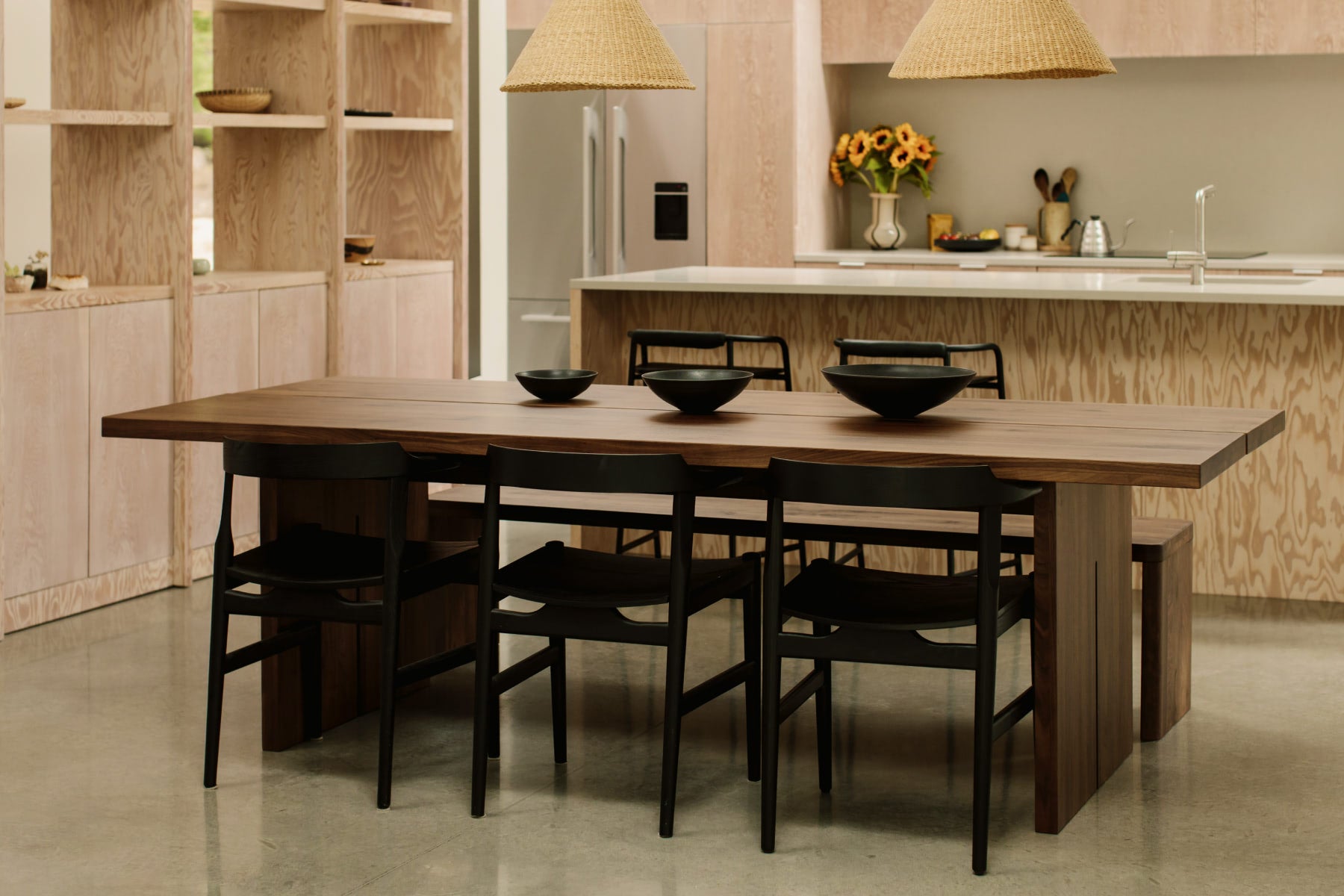
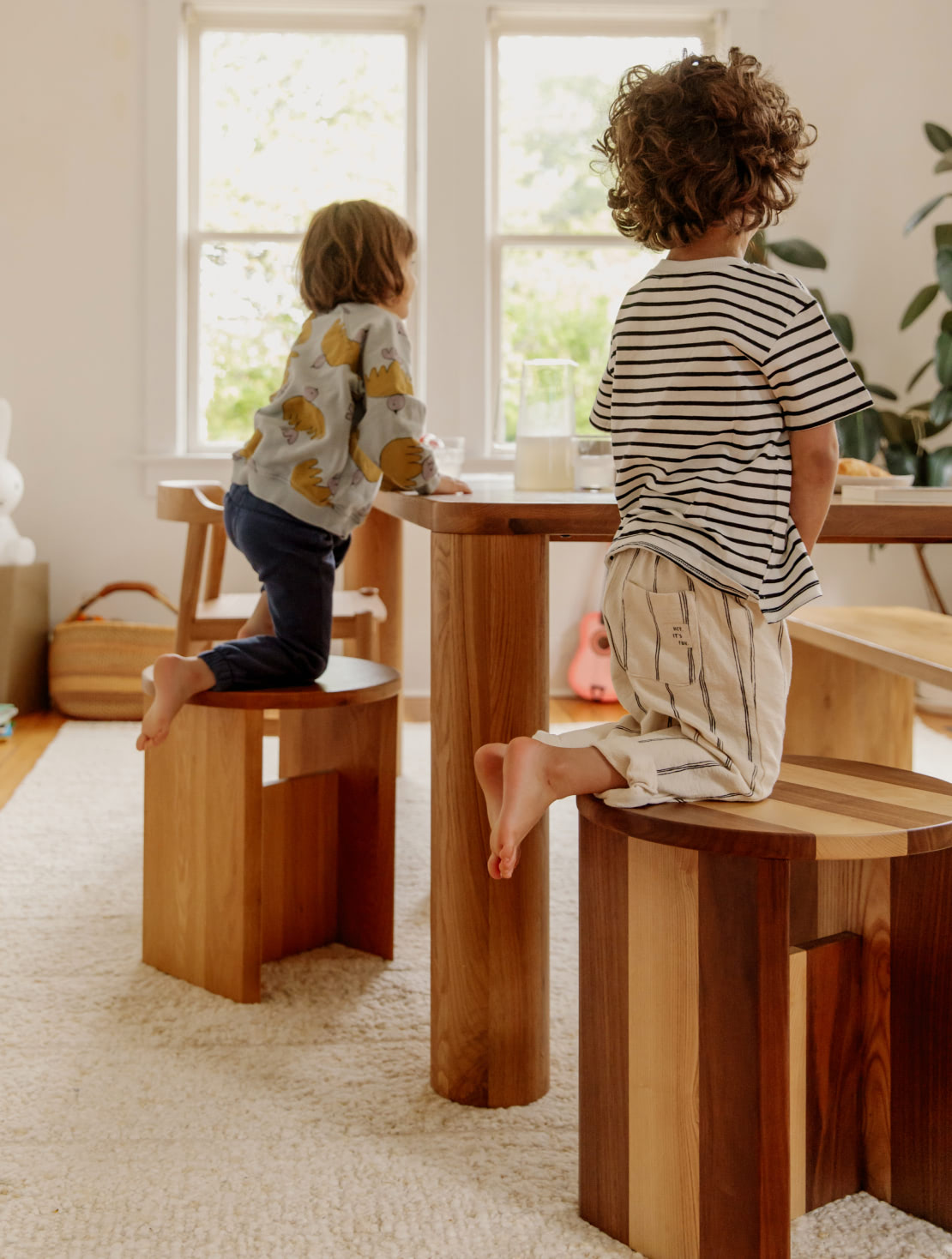
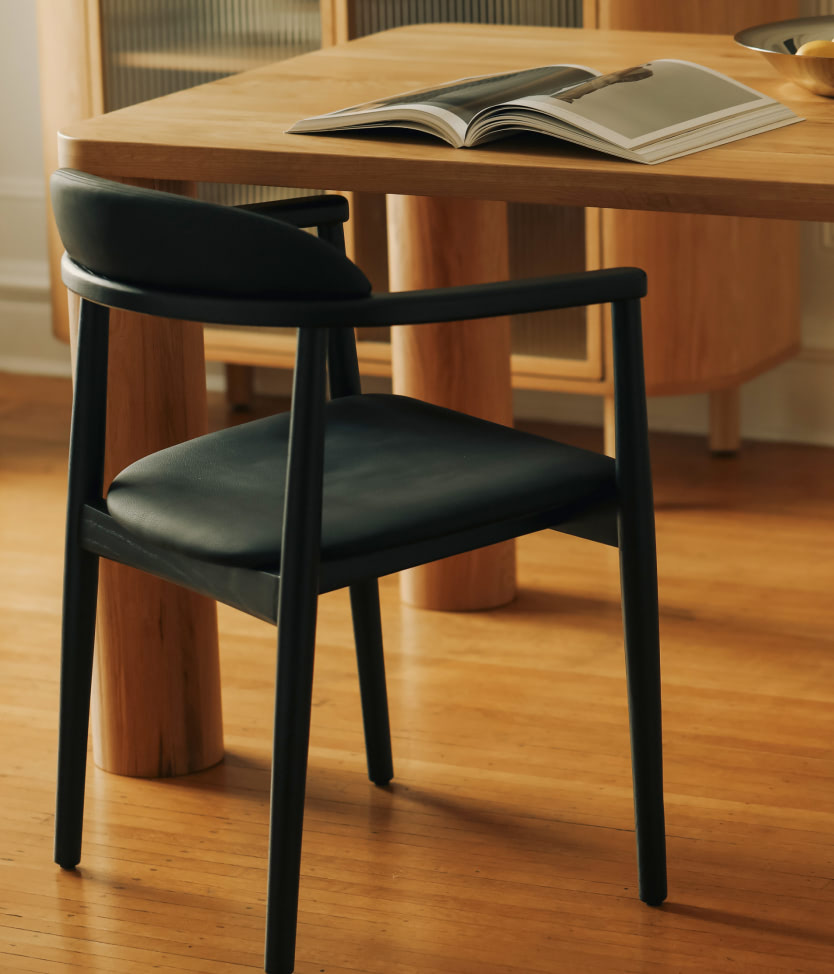
Overview of Wood Types
Wood furniture is timeless—whether it's solid wood, engineered wood, or a mix of both. You may already have a favorite or be drawn to a certain grain or color, but there's a lot more to consider. From hard, dense woods to lightweight, budget-friendly options, there’s something for every home and every budget.
The wood you choose can completely transform a piece of furniture. It’s about more than looks—it’s about how long it will last, how well it stands up to daily life, and even how it feels to the touch.
In this guide, we’ll cover the most popular types of wood, including hardwoods, softwoods, and engineered wood options. And don’t worry—if you want to dig deeper into any of these woods, we’ve got future posts coming that’ll give you all the details.
Hardwood vs. Softwood: What's the Difference?
First things first, let’s talk about the major categories: hardwoods and softwoods. The main difference comes from the type of tree the wood is sourced from. Hardwoods come from deciduous trees (the kind that lose their leaves), and softwoods come from coniferous trees (think evergreen, like pine).
Hardwoods are generally denser, which contributes to their durability and resistance to wear and denting. They can be more challenging to work and require more specialized tools and makers. However, they can hold more intricate details and have the flexibility to follow the designs. Hardwoods also tend to have a more complex grain pattern and exhibit a wide range of textures and colors.
On the other hand, softwoods are less dense, softer and easier to work with, but also more prone to dents and scratches. They are easier to cut, shape, assemble and more versatile to be used in a broader range of applications. Softwoods usually have a simpler, straighter grain and are lighter in color. They can be stained or finished to mimic the appearance of hardwoods but at a lower cost.
If you're on the hunt for something stylish and long-lasting, check out some of our hardwood pieces like the Field Dining Table or the Form Storage Bed. These beauties aren’t just about looks—they’re durable and built to withstand the rigors of daily use.
Common Hardwood Types
Hardwoods like oak and walnut are often selected for larger, heavy-duty furniture pieces that need to withstand significant weight and daily wear and tear. These durable woods are ideal for items like dining tables, dining chairs, office desks, and bed frames. Their strength and resilience make them well-suited for furniture that requires longevity and stability.
Oak
Oak is one of the most popular choices in furniture for good reason—it’s strong, durable, and versatile. Known for its distinctive grain patterns, oak furniture can fit right into a modern or traditional home. Whether you're eyeing a sturdy cabinet or a long-lasting dining table, oak’s resilience makes it a great investment.
Our Showcase Cabinet is a prime example of how beautiful oak can be in your home. And, we have a range of cabinets in different styles—so we have you covered no matter what you’re after.
Maple
If smooth, even grain is more your style, maple could be the wood for you. It’s tough enough to withstand daily use but has a subtle, clean look that’s perfect for a modern aesthetic. This wood is a go-to for high-use furniture like kitchen tables or dressers.
Walnut
Rich, dark, and incredibly elegant, walnut has a unique color and texture that sets it apart from other hardwoods. It's often found in high-end furniture pieces because of its beauty and strength. Our Form Coffee Table in Walnut is a perfect showcase of walnut’s natural luxury. And, you can browse our larger collection of wooden coffee tables here to find something that suits your style.
Teak
Known for its durability, teakwood is one of the best choices for outdoor furniture. It’s naturally resistant to the elements, which means it can handle rain, sun, and wind without breaking down. If you’re looking for a piece to grace your patio, our Make Room Extendable Outdoor Dining Table in Teak is both functional and beautiful. We also have a full collection of outdoor pieces for creating the patio you’ve always wanted.
Acacia
Acacia wood is another excellent choice for outdoor furniture. Its density and resistance to rot make it perfect for anything that will spend time outdoors. But this versatile wood is also an elegant option for inside as well. Our Everyday Nightstand in acacia wood is a great indoor peice, bringing warmth and a touch of nature inside. Browse our other nightstands in the Sundays collection, because we have styles that suit a range of aesthetics.
Common Softwood Types
These woods are well-suited for items such as children’s furniture, nightstands, and side tables, which serve more decorative and functional roles without requiring the durability of hardwoods. The lighter weight and easier workability of softwoods make them ideal when frequent rearranging or lower load-bearing is a factor.
Pine
Pine is affordable, lightweight, and commonly used in rustic or farmhouse-style furniture. Its light color and soft grain patterns give it a charming, homey feel, but because it's a softwood, it can dent or scratch more easily. However, this can also add character to the piece over time.
Cedar
Naturally resistant to decay and insects, cedar is a favorite for outdoor furniture and even storage pieces like wardrobes. Its natural oils repel bugs, making it ideal for protecting clothes or outdoor gear.
Fir
Fir wood is a strong and economical option, often used in basic furniture or even construction. While it may not have the same standout grain or color as some hardwoods, it’s reliable and gets the job done.
Engineered Wood Options
Engineered woods have greatly improved in recent years with advances in technology and better finishes. Once viewed as budget alternatives, they now offer impressive durability and design versatility. Modern finishes provide a polished look that rivals traditional hardwood, making engineered woods a smart, stylish option for today’s homes.
Plywood
Made from layers of wood veneer, plywood is strong, stable, and often used as a core material for furniture. It's especially great for pieces that need to maintain shape without warping over time.
MDF (Medium-Density Fiberboard)
MDF is composed of wood fibers, and its smooth surface makes it perfect for painting or finishing details. In fact, MDF is how we create that smooth siding and elegant tambour doors on our Easy Edge Sideboard. We have a range of sideboards in different materials and sizes, and you can browse them all here.
Particleboard
A budget-friendly option made from wood particles, particleboard is often used in furniture that won’t be under heavy daily use. It’s lightweight and affordable, though not as durable as solid wood.
Choosing the Right Wood for Your Furniture
So how do you decide which wood is right for your next piece of furniture? It often comes down to these four factors:
Durability
Think about how much wear and tear the piece will endure. If it’s a dining table or bed frame, hardwoods like oak or walnut are your best bet. And, if you live in a busier household with pets and kids, sturdy, solid wood will stand up better to the daily wear and tear.
Aesthetics
Different woods have different grains and colors, so think about the overall look you’re going for. Walnut brings richness, while pine offers a lighter, more rustic feel. Certain woods, like Oak, take stains exceptionally well, so it’s possible to find a wider range of hues.
Budget
Hardwoods tend to be more expensive, but they’re also more durable in the long run. If you’re looking for something budget-friendly, softwoods or engineered wood options might be better suited for you. It can ultimately be a trade-off—since hardwood pieces won’t need to be replaced as often as cheaper options.
Intended Use
Where will this piece live in your home? For outdoor spaces, durable options like teak and acacia are your best choices. For indoor furniture, the sky’s the limit depending on your needs and preferences.
In the end, the wood you choose will shape not only the look but the longevity of your furniture. Even though wood is a material as old as furniture itself, there are always new trends to keep an eye on. Lately, we’re seeing a strong focus on sustainability, using reclaimed wood from old buildings or repurposed materials. This not only adds a unique character to each piece but also aligns with eco-friendly practices.
At Sundays, we have plenty of different wood options to help you find your perfect piece. Ready to explore? Check out our full collection and let us help you bring home something that feels just right.
The wood you choose can completely transform a piece of furniture. It’s about more than looks—it’s about how long it will last, how well it stands up to daily life, and even how it feels to the touch.
–NOAH MORSE, SUNDAYS CO-FOUNDER AND HEAD OF PRODUCT
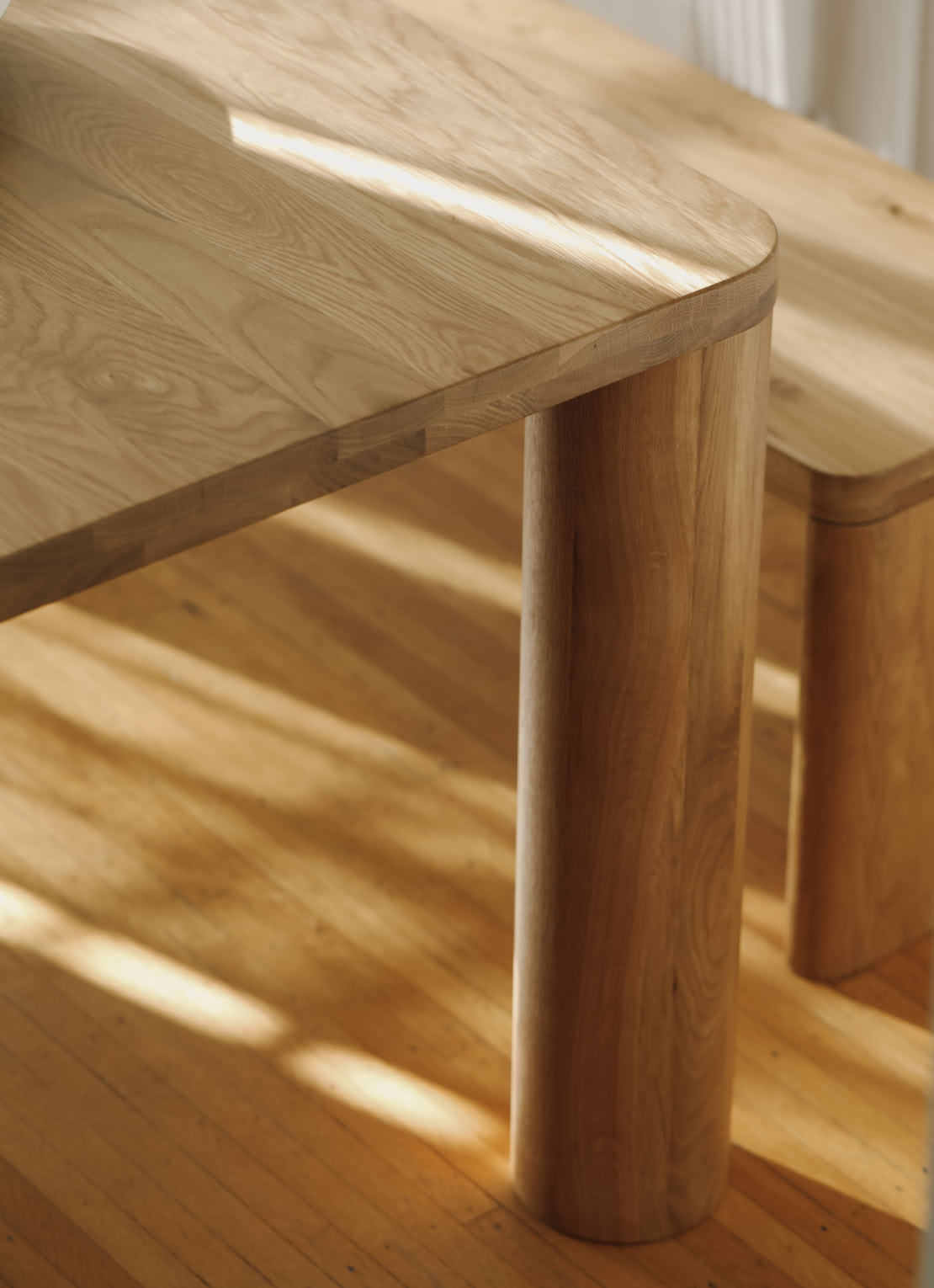
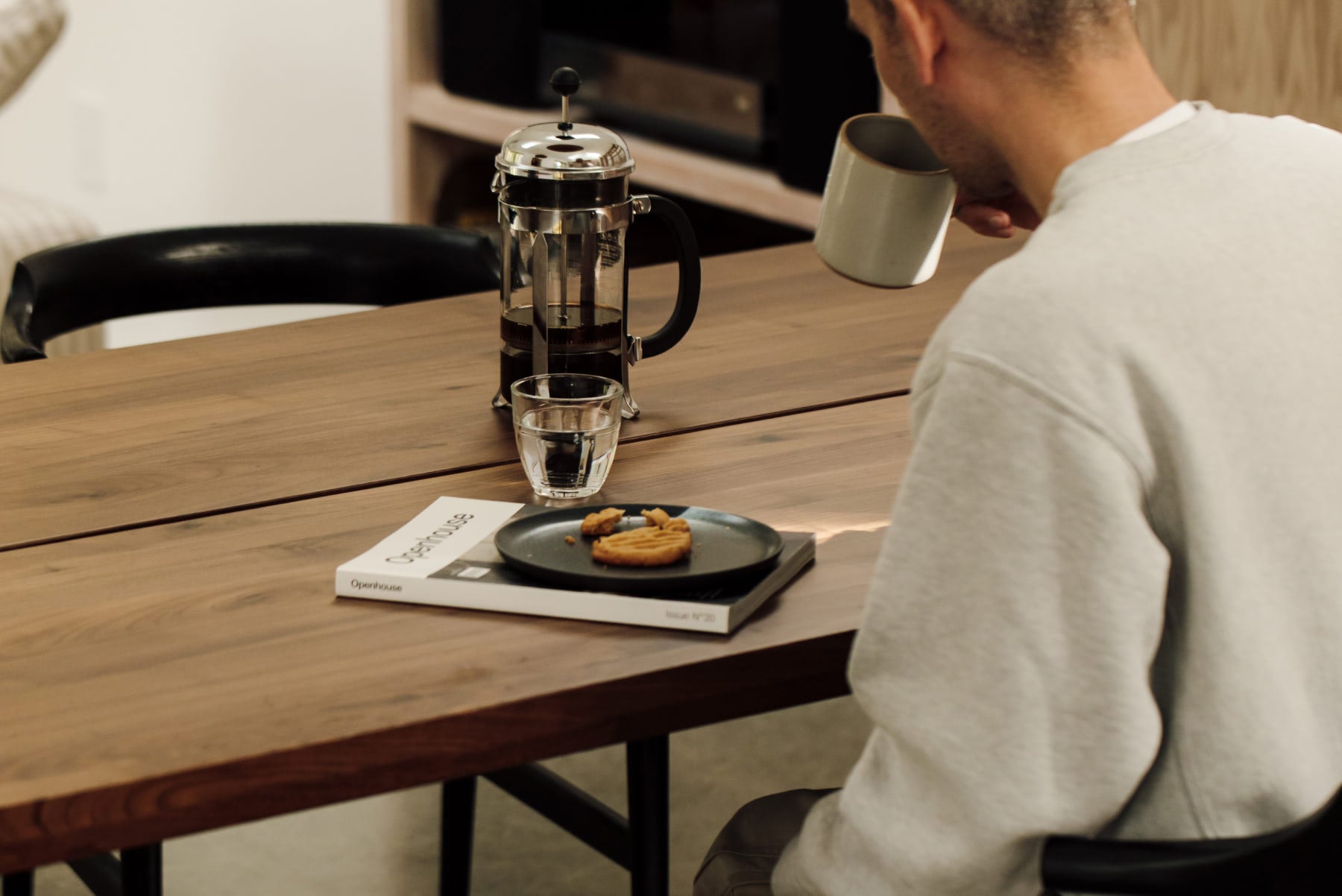
Frequently Asked Questions
Which type of wood is best for furniture?
It really depends on what you're looking for in a piece of furniture. Hardwoods like oak, walnut, and maple are often considered the best because they’re incredibly durable and age beautifully over time. Oak is versatile and strong, making it a great all-rounder, while walnut offers a rich, luxurious finish for those who want something a little more high-end. If you’re looking for outdoor furniture, teak is a top choice due to its weather resistance.
What wood makes the best furniture?
The best wood for furniture depends on a few factors: durability, aesthetics, and your personal style. For something that will last a lifetime, hardwoods like walnut, oak, and teak are excellent choices. Walnut, for example, is often found in high-end pieces because of its dark, elegant appearance and strength. Oak, on the other hand, is super durable and fits into a wide range of styles. If you need something for outdoor use, teak’s natural resistance to the elements makes it unbeatable.
How do you identify wood types in furniture?
Identifying wood types can be a bit tricky, but there are a few key things to look for. Start with the grain pattern—each wood has a distinctive look. Oak, for example, has a prominent grain, while maple is smoother and more subtle. Color is another giveaway: walnut tends to be rich and dark, while pine has a lighter, yellowish hue. You can also check for weight and hardness; hardwoods like oak and walnut are heavier and more resistant to scratches compared to softer woods like pine.
What is the cheapest wood for furniture?
Pine is often the go-to choice for budget-friendly furniture. It’s a softwood, which makes it less expensive, but it’s still a great option for rustic or farmhouse-style pieces. Another affordable choice is engineered wood, like particleboard or MDF, which is commonly used in budget-conscious furniture.
What is the longest-lasting wood for furniture?
If you want furniture that stands the test of time, hardwoods like teak, oak, and walnut are your best bets. Teak is particularly long-lasting, especially outdoors, thanks to its natural oils that repel water and prevent rotting. Oak and walnut are great indoor options that are built to last for generations, maintaining their beauty and strength over time.
What wood is most expensive for furniture?
Walnut is one of the pricier woods used in furniture making due to its rich, dark color and strong, luxurious finish. It's often found in high-end, handcrafted pieces. Teak is another expensive option, especially for outdoor furniture, because of its durability and weather resistance. Both woods are investments, but they pay off with their longevity and classic beauty.
By Noah Morse, Sundays co-founder and head of product
